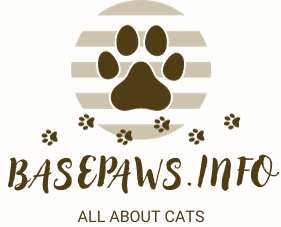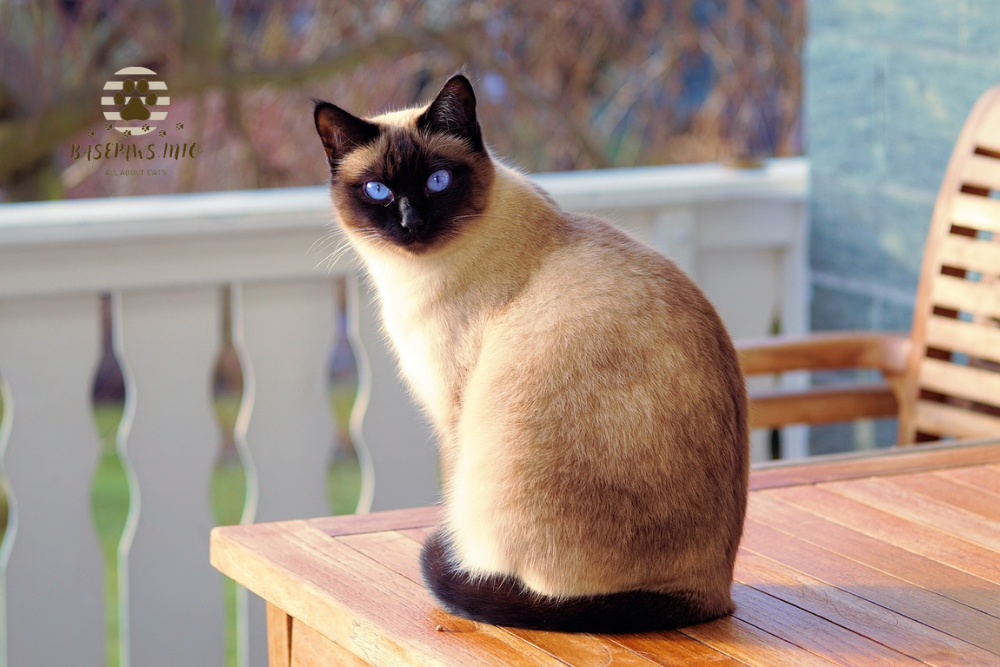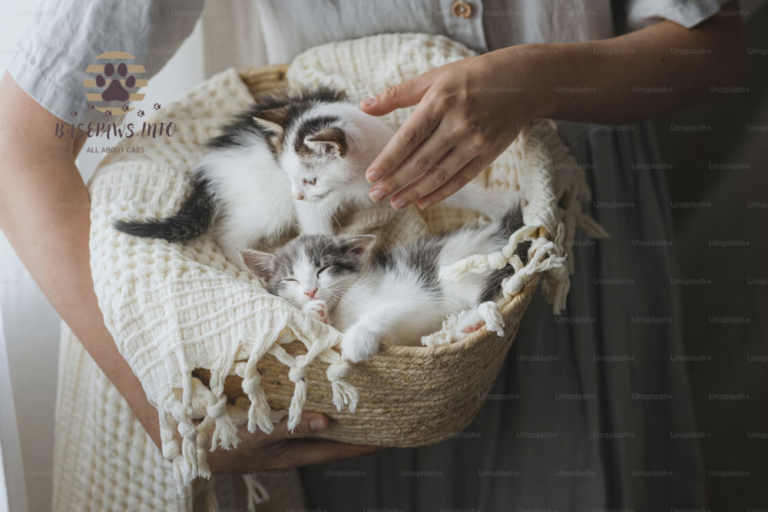Cat Eye Language: Exploring the Six “Words” Cats Speak with Their Eyes
Have you ever looked into your cat’s eyes and wondered what they were trying to tell you? Understanding feline communication can feel like a puzzle. Many cat owners struggle to interpret their pets’ feelings and needs, leading to confusion and miscommunication. Fortunately, by learning the subtle cues and expressions your cat uses, you can strengthen your bond and respond to their needs effectively.
Cats communicate in a variety of ways, but their eyes are particularly expressive. By deciphering what your cat is saying with its eyes, you can better understand their emotions, moods, and even health concerns. This article will provide insights into the meanings behind different eye expressions and help you become more attuned to your furry friend.
As you read through this guide, you’ll gain valuable knowledge about the significance of cat eye language. You’ll learn to interpret various eye cues, recognize emotional responses, and identify potential health issues—all essential for ensuring your cat feels safe and loved in your home.
Understanding Feline Communication: Cat Eye Language
The Importance of Eye Language
Cats, like humans, use non-verbal communication to convey their feelings. Eye language plays a vital role in how cats express themselves. Understanding this unique form of communication can enhance your relationship with your pet and help you respond to their needs.
The Role of Cat Eyes in Communication
Cat eyes have a distinct structure that allows for unique expressions. Learning how to interpret these expressions can make a significant difference in your interactions. Let’s explore the unique characteristics of cat pupils and the physiological changes that occur in their eyes.
Unique Characteristics of Cat Pupils
Cats have vertical slit pupils that can open wide or narrow to control the amount of light entering their eyes. This adaptation allows them to see well in low light, making them effective hunters. The shape and size of their pupils can convey various emotions and reactions.
Physiological Changes in Pupil Size and Eyelid Position
When a cat is excited or scared, their pupils can dilate dramatically. Conversely, when relaxed, the pupils may be more constricted. Additionally, the position of their eyelids can indicate their mood, such as a slow blink signaling affection.
What Cats Say With Their Eyes
Understanding what your cat is trying to communicate through its eyes involves recognizing specific expressions and their meanings. Let’s break down the six “words” cats can say with their eyes.
| Eye Expression | Meaning |
| Relaxed Smiling Eyes | Signaling Trust and Affection |
| Good Vibes Slow Blink | Expressing Love and Trust |
| Check Yourself Stare | The Message of Interest and Control |
| Alert Wide Eyes | Indications of Calm and Awareness |
| Danger’s Afoot Saucer Eyes | Recognizing Signs of Stress |
| Bring It On! Narrowed Eyes | Understanding Control and Aggression |
The Six “Words” Cats Can Say with Their Eyes
1. “Relaxed” Smiling Eyes
When you see your cat looking at you with relaxed, half-closed eyes, it’s a clear sign of trust and affection. This expression indicates that your feline friend feels safe and comfortable in their environment. Cats often display this look when they are lounging peacefully or when they’re being petted. It’s their way of saying, “I love you, and I’m at ease.” If your cat approaches you with these soft, dreamy eyes, take it as an invitation to engage in some gentle bonding, like a quiet cuddle or some gentle strokes. This eye expression is a powerful reminder of the bond you share with your pet, reinforcing feelings of security and love.
2. “Good Vibes” Slow Blink
The slow blink is one of the most heartwarming gestures a cat can offer. When your cat blinks slowly at you, it’s their way of expressing love and trust. This gesture is often referred to as a “cat kiss.” If you want to strengthen this bond, try reciprocating by blinking slowly back at your cat. When you do this, you’re not only acknowledging their affection but also showing them that you’re relaxed and non-threatening. Over time, these slow blinks can enhance your relationship, creating a deeper connection based on mutual trust and comfort. This exchange can turn into a beautiful ritual that deepens your bond and fosters a peaceful environment for both of you.
3. “Check Yourself” Stare
A focused, intense stare from your cat may seem intimidating, but it often signifies that they are assessing their surroundings. This expression, referred to as the “check yourself” stare, is a form of observation where your cat is trying to gauge their environment or the behavior of another animal or person. When a cat is staring, especially in the presence of a new pet or during playtime, they might be showing interest or trying to assert control over the situation. It’s important to pay attention to the context in which this stare occurs. If your cat stares with relaxed body language, they may simply be curious. However, if their body is tense and their ears are perked up, it may indicate that they are on alert and ready to act, either by playing or defending their territory.
4. “Alert” Wide Eyes
When your cat’s eyes are wide open, it signals that they are calm and aware of their surroundings. This expression can indicate curiosity or readiness to engage with something exciting, whether it’s a new toy, an interesting sound, or even a potential threat. Cats are naturally curious creatures, and wide-open eyes are their way of demonstrating engagement and attentiveness. If you notice this look, it might be a great time to engage in play or introduce something new to their environment. Wide eyes can also indicate that your cat is fully alert, ready to jump into action, whether for play or to investigate something intriguing.
5. “Danger’s Afoot” Saucer Eyes
If your cat suddenly has saucer-like eyes, it’s a strong indication that they are startled or stressed. This expression usually occurs in response to unexpected noises, sudden movements, or unfamiliar situations. When you see this wide-eyed look, it’s important to assess the environment for potential stressors and give your cat some space to calm down. Look for accompanying signs of anxiety, such as a lowered tail, flattened ears, or a tense body posture. Understanding this expression can help you create a more supportive and less stressful environment for your feline friend. If your cat regularly displays this behavior, it may be worthwhile to investigate ways to reduce stressors in their environment, ensuring they feel safe and secure at home.
6. “Bring It On!” Narrowed Eyes
When your cat narrows their eyes, it can be a sign of aggression or discomfort. This expression often indicates that your cat is feeling threatened or is preparing to defend themselves. If you notice your cat displaying this look, it’s essential to give them space and avoid any sudden movements that could escalate their stress. A cat with narrowed eyes might also be trying to assert dominance over another pet or situation. Observing their body language in conjunction with this eye expression can provide clues to their emotional state. Pay attention to other signs, such as whether their ears are flattened or if their body is tense. Understanding this expression is vital for ensuring your cat feels secure and comfortable, and for preventing potential confrontations with other pets or people.
Key Emotions Communicated Through Eyes
Arousal — Signs of Emotional Response
Cats are masters of non-verbal communication, and their eyes play a significant role in expressing various emotional states. One clear sign of arousal is the dilation of their pupils. When a cat’s pupils expand, it often indicates heightened emotions, whether from excitement, curiosity, or alertness. This change in pupil size can be accompanied by other body language signals, such as twitching whiskers or a poised stance, suggesting that your cat is fully engaged with their environment. For instance, if you notice your cat’s pupils dilating while watching a bird outside, they are likely in a state of heightened interest and anticipation. Understanding this emotional response can help you recognize when your cat is in a playful or alert mood, allowing you to interact with them in ways that suit their emotional state.
Trust — Indicators of Calm Behavior
When a cat feels safe and secure, they exhibit specific eye expressions that demonstrate trust. A relaxed cat typically has soft, half-closed eyes, and they may engage in slow blinks, which signal affection and comfort. This behavior is often seen when a cat is resting beside their owner or being gently petted. In these moments, your cat is not only expressing their contentment but also indicating that they consider you a safe presence. By reciprocating slow blinks, you can strengthen this bond, signaling to your cat that you feel the same way. Creating a trusting environment encourages your cat to express their emotions more openly, enhancing your overall relationship.
Dominance — Understanding Control and Aggression
Cats often communicate their feelings of dominance or assertiveness through their gaze. An unblinking stare can indicate that your cat is trying to assert control or challenge another cat or even a human. This expression should not be ignored, as it can signal potential aggression or territorial behavior. To accurately gauge your cat’s emotions in these situations, it’s essential to consider their other body language cues. For example, if your cat maintains a strong stare while standing tall with an upright tail, they may be expressing dominance. However, if they also exhibit signs of tension, such as raised hackles or stiffened posture, it could indicate a readiness to confront. Understanding these signals can help you navigate your cat’s behavior and reduce potential conflicts, particularly in multi-pet households.
Aggression — Recognizing Signs of Fear and Hostility
Aggression in cats is often accompanied by a series of distinctive signs, and understanding these can be crucial for the safety of both your cat and other pets. When a cat exhibits narrowed eyes, flattened ears, and a tense body posture, they are likely feeling threatened or fearful, leading to aggressive behavior. Narrowed eyes, in particular, can signal a defensive stance, indicating that your cat is ready to protect itself. These expressions might occur in stressful situations, such as introductions to new pets or during play that becomes too rough. By recognizing these signs early, you can intervene if necessary, giving your cat space to calm down or redirect their attention to a toy. Being aware of these emotional cues allows you to create a more harmonious environment for your feline friend, minimizing the chances of confrontations or stress-related behaviors.
Health Indicators
- Eyes Can Be Windows to Health Issues
- Changes in your cat’s eye expressions can indicate potential health issues. Keeping an eye on their behaviors is crucial for their well-being.
- Recognizing Signs of Health Problems
- Look for signs such as excessive tearing, redness, or changes in pupil size. If you notice anything unusual, consult your veterinarian.
- How Changes in Your Cat’s Eyes May Indicate Vision Issues
- If your cat’s eyes appear cloudy or they seem to bump into things, it may be time for a veterinary checkup.
When to Consult a Veterinarian
Understanding Vision Problems in Cats
Cats can experience vision problems, and early detection is vital. If you notice changes in their behavior related to their eyesight, seek professional help.
Recommendations for Calming Products for Stressed Cats
If your cat is often stressed, consider using calming products like pheromone diffusers or anxiety wraps. These can help create a more relaxing environment for your pet.
Understanding how your cat communicates through their eyes and cats tail wagging is essential for building a strong relationship. This article explored the various eye expressions of cats, from the affectionate slow blink to the confrontational hard stare. Each of these expressions conveys distinct emotions and needs, offering insights into your cat’s feelings and state of mind.
Recognizing these eye cues enables you to respond appropriately, whether your cat is expressing trust, curiosity, or fear. By paying attention to your cat’s eye language, you can deepen your connection with them, fostering a relationship built on understanding and affection. This awareness not only enhances your bond but also ensures that your furry friend feels loved and safe.







